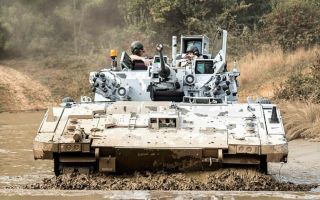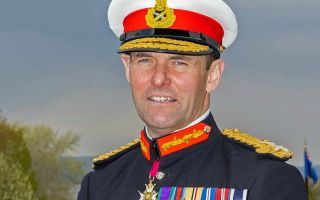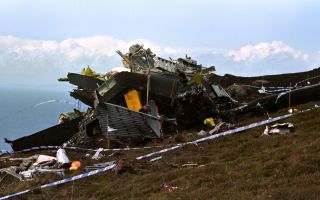
Heart of the British Army: What is the Infantry made up of?

The Infantry is one of the foundations of the British Army, making up a quarter of its strength.
Britain's Infantry considers itself to be the heart of the Army, at the core of its Ground Close Combat capability.
It is built on hundreds of years of history based on a regimental system, with a regiment being made up of one or more regular battalions and in most cases includes an associated Army Reserve battalion.
General Sir Nick Carter, Chief of the Defence Staff, has spoken of his pride in the Infantry, saying: “The infantry is at the heart of the army and everything else coalesces around it.”
From combat to peacekeeping operations, the infantry is always at the heart of the action. Versatile, mobile, and fast-moving, they can be deployed at a moment's notice and are stationed all around the world from Brunei to Belize.
The history of the modern warriors dates to the 16th century.
The word ‘infantry’ first appeared in the 1570s to describe foot soldiers. Today, they have the most sophisticated firearms and armoured vehicles at their disposal but ‘boots on the ground’ remains vital in what they do in the nation's defence.
Throughout the ages, militaries have evolved around forms of regimental organisation.
The Ancient Greek Army was made of phalanx, the Romans were famous for their legions, while the British Army has developed into organised regiments.
The key to the Infantry’s success over the centuries has been the tried and tested regimental system. Here we explore the building blocks that it is made of.
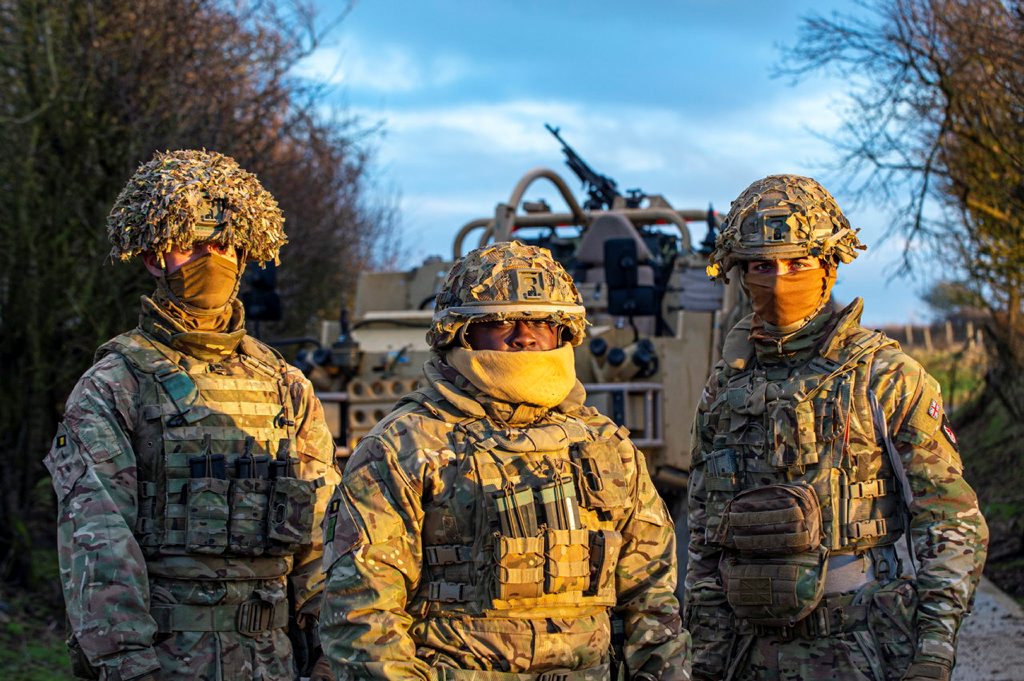
Fire Team
The structure of modern armed forces dates back to the 18th century when professional armies were formed in Europe at the end of the Middle Ages. Battalions, brigades and divisions have remained a constant feature of what makes an army. These large formations are divided into smaller units. The smallest of these are fire teams.
A fire team is a small military sub-unit of Infantry designed to opitmise tactical fire and movement in combat.
Fire teams are the primary building block of the infantry. They are typically named ‘Charlie’ and ‘Delta’.
Commanded by a Lance Corporal, fire teams are flexible and agile, consisting of three to four soldiers.
Fire teams can operate autonomously as part of a larger unit to provide flexibility in Infantry operations.

Section
A section is a small military unit containing two fire teams. To our allies across the pond, it is known as a squad.
Eight to ten personnel are commanded by a Corporal, with a Lance-Corporal as his second-in-command.
Essentially each unit is a team, as the formations get bigger starting from a fireteam all the way up to a division the core ethos of each unit remains the same. According to a British army soldier's values and standards "teams can only be effective if we all play our part in full, putting the team and the mission before our own needs, trusting each other totally - even with our lives if necessary."

Platoon
The infantry is organised hierarchically into progressively larger units commanded by officers of progressively higher rank. A platoon is the next unit up from a section. It is made up of three sections.
About 30 personnel are commanded by a Lieutenant or Second Lieutenant and supported by a Seargent.
A Seargent has many years of experience and keeps the platoon in order while the Lieutenant is the official leader.
A platoon is the smallest military unit headed by a commissioned officer.
Under ordinary circumstances, the whole platoon with the exception of gunners is armed with an individual weapon.

Company
Companies form the building bricks of a battalion. They are made up of three platoons consisting of 120 personnel, led by a Major and administered by a Company Seargent Major.
The infantry normally identifies its rifle companies by letter and also often contains a headquarters.
Not all companies have been called companies in the British Army, which can be confusing. Units of similar size and formation as companies with a horse-mounted heritage have often been referred to as squadrons. These include the Household Cavalry, the Royal Corps of Signals and Royal Armoured Corps.
The company as a military unit has stood the test of time. The Romans relied on groupings of 100 men as their main administrative and tactical units. It was believed that in a group of that size men would be familiar with each other personally and could form the strongest team possible. One man would also be able to address the unit as a whole with his voice and physical presence - commanding the 'company' in a cohesive way.
Even after the invention of radio and mobile communications, which would make it easier to simultaneously command much langer units, the company consisting of around 120 soldiers remains a key building block in the British military.

Battalion
A battalion consists of four to six companies and has been a stable feature in the British Army foundation since the end of the 16th century. The world itself migrated to the English language from the Itainam word 'battaglione' which means battle. It wasn't until 1708 when the term battalion was first used to mean 'part of a regiment'.
A Lieutenant Colonel commands 720 people that are also administered by a regimental Sergeant Major.
The term battalion has been used in almost every Western army for the past 500 years. Its exact meaning has changed over time, however it has always been used to describe any large formation of soldiers in the infantry.
During the Napoleonic Wars, General Bonaparte reorganised the French military making the regiment the administrative until for battalions.
In some contexts, the terms battalion and regiment are interchangeable. However, in the modern British infantry, the regiment is a higher unit than the battalion.

Regiment
A Regiment consists of one or more regular battalions and often includes an associated Army Reserve battalion.
Some of the countries oldest and most iconic military formations are regiments such as the Grenadier Guards and the Coldstream Guards.
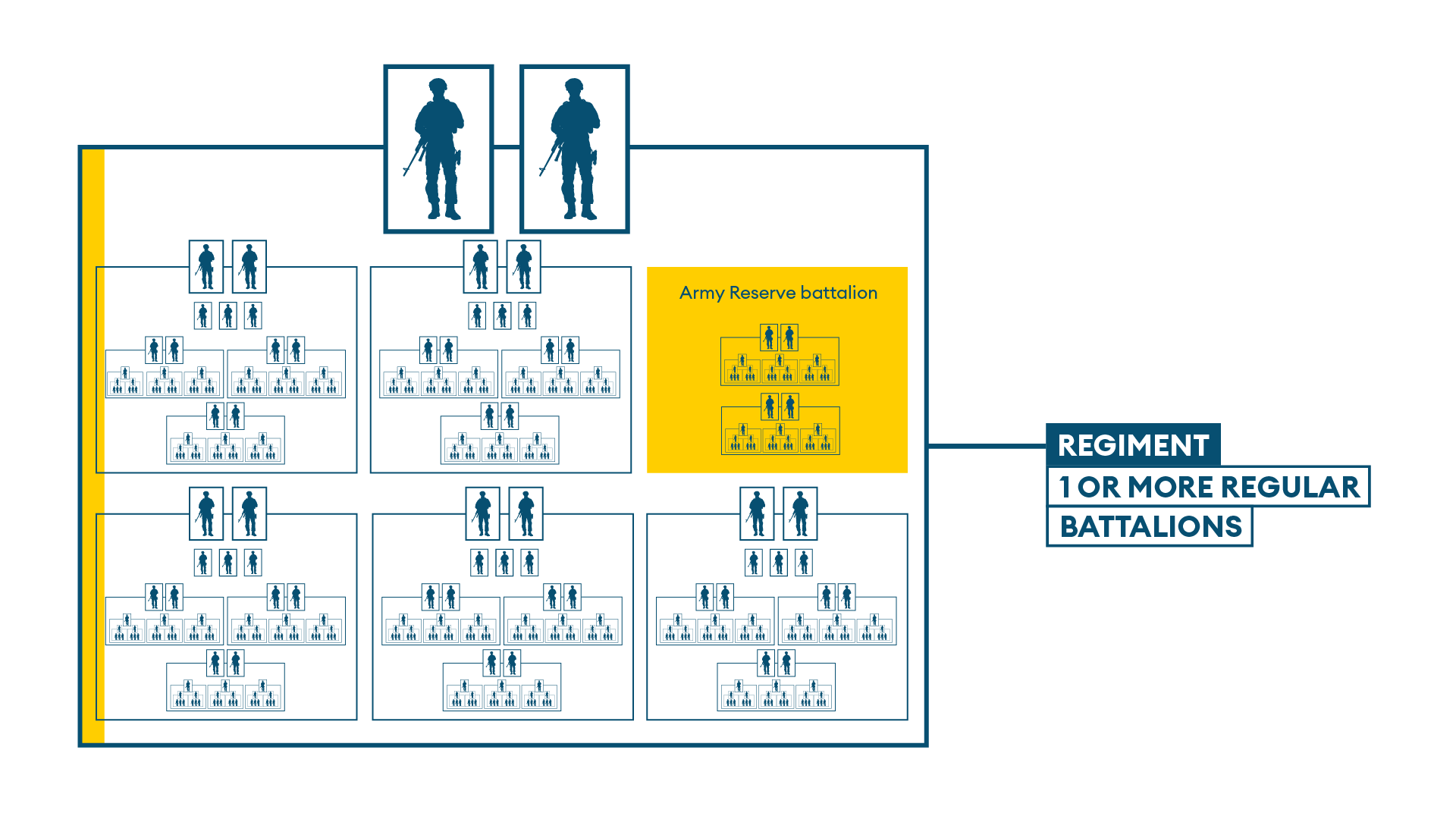
Brigade
Under the command of a Brigadier, a brigade is made up of five battalions and supporting elements that contain 5,000 people.
The brigade became a feature of the British army in the 15th century. Before then each cavalry squadron, battalion and regiment were not under centralised control and operated somewhat independently.
During both world wars, a brigade numbered between 3,500 and 4,000 men. Currently, two or more brigades form a division.
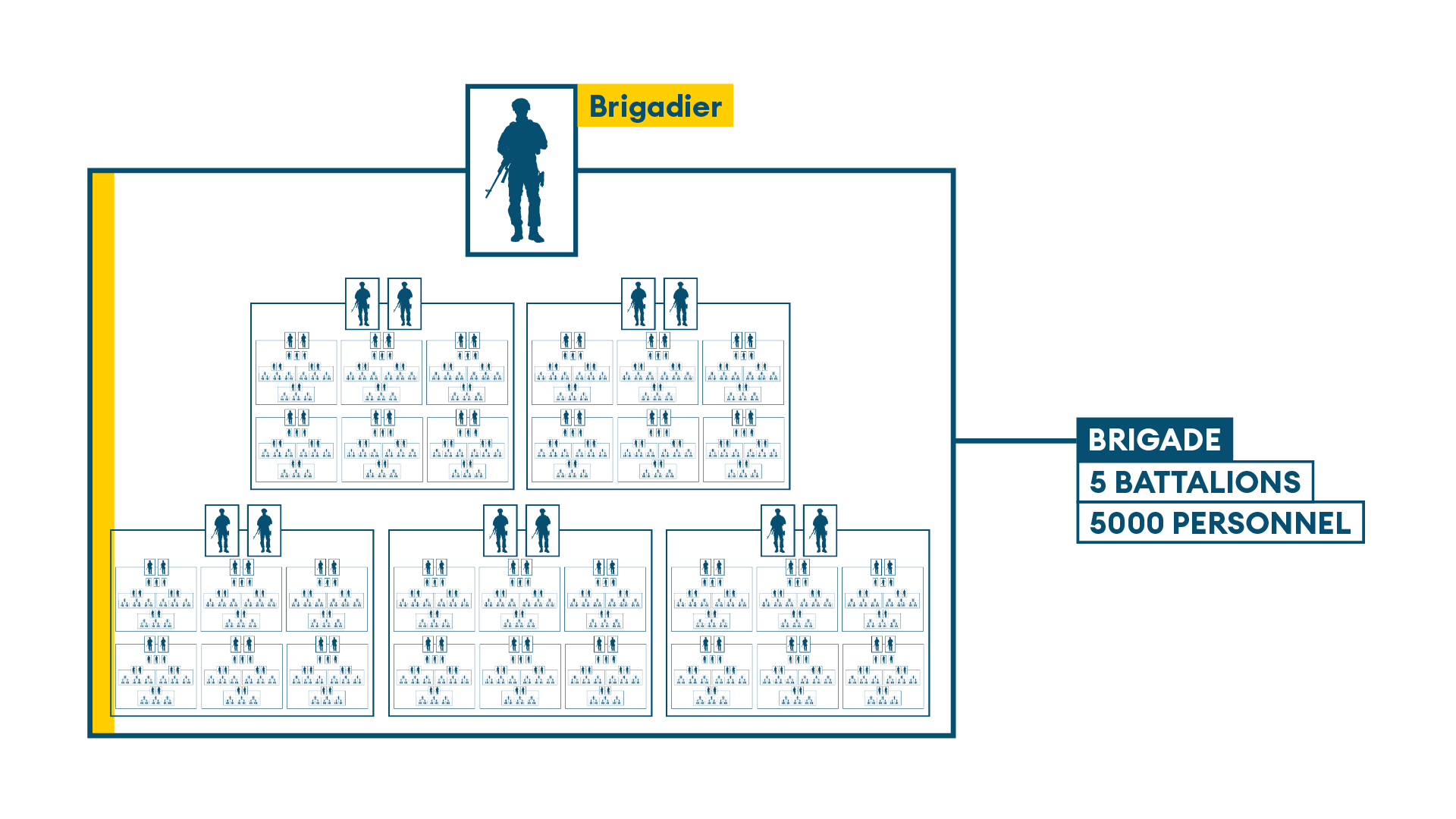
Division
The largest formation in the British Army
Today, the British Army has two deployable divisions.
During the Second World War, the British army had 49 infantry divisions. At the end of the war in 1945, there were 24. During Both World Wars a typical division consisted of 16,000 men.
Currently, a division has three brigades that together have 10,000 personnel.
The largest formation in the British army is commanded by a Major General.
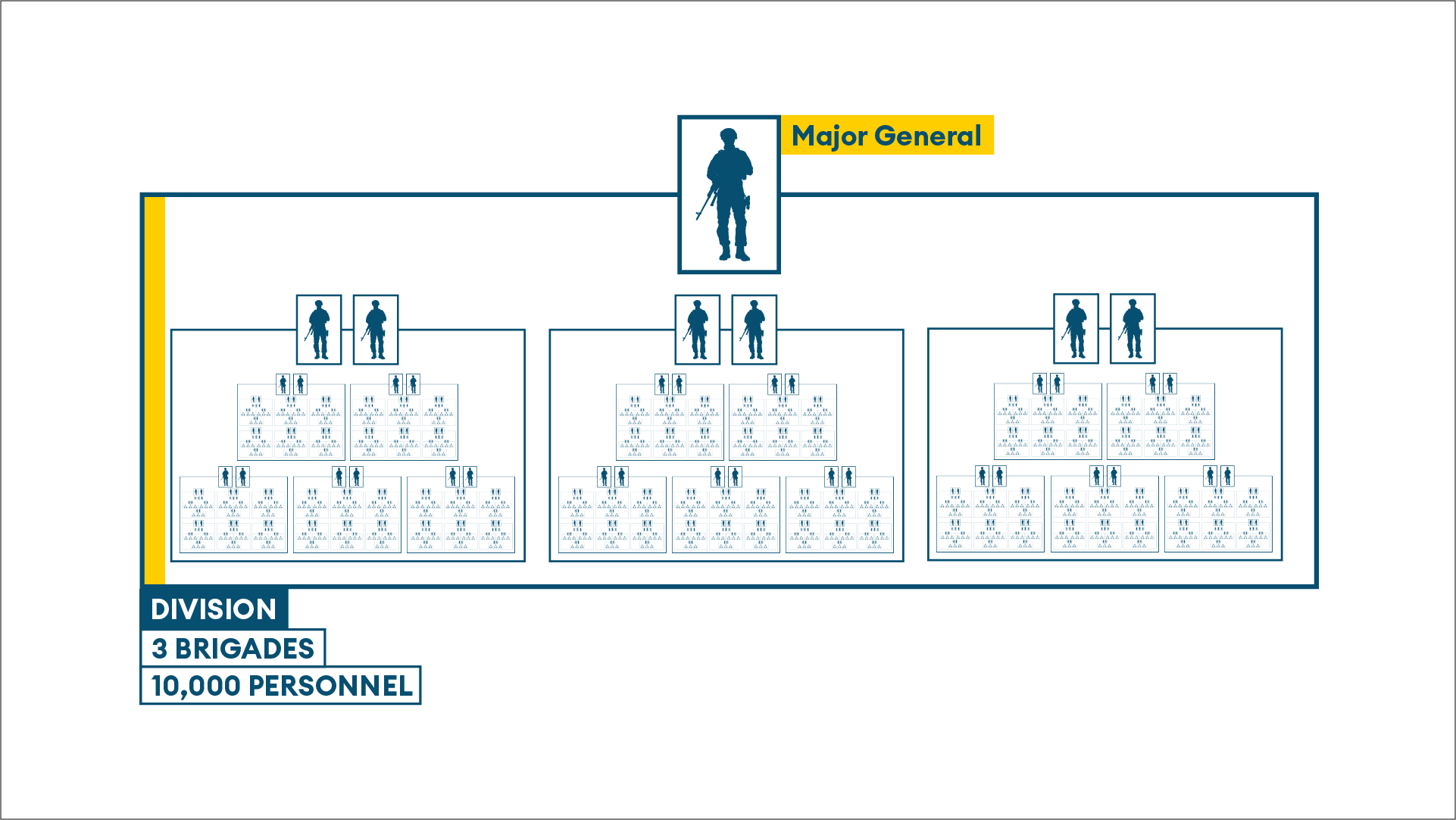
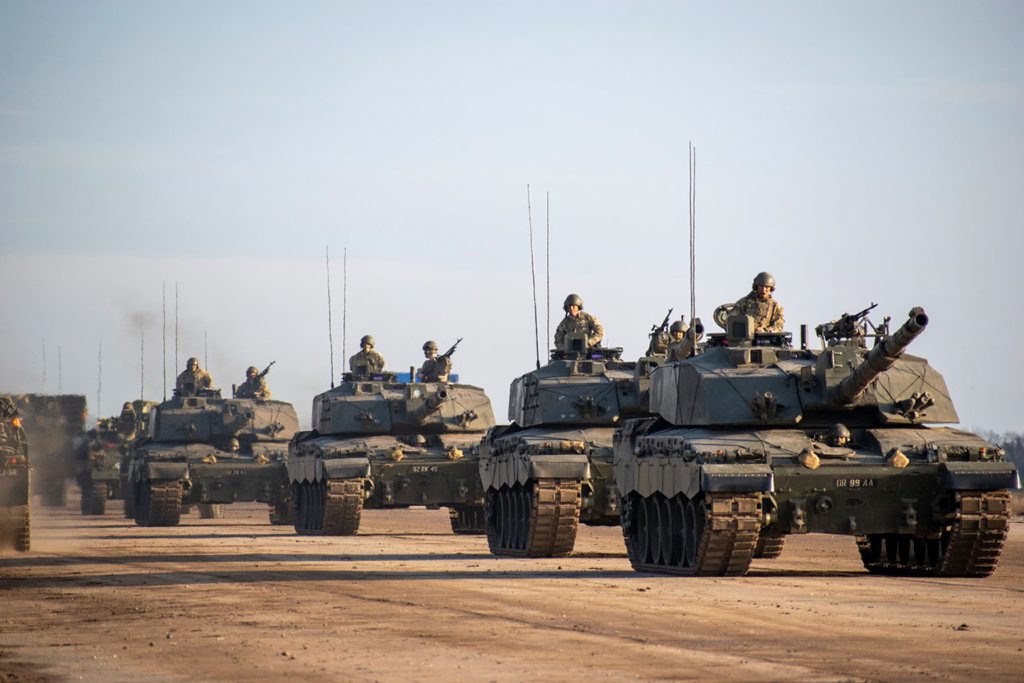
The British Army serves to protect the United Kingdom's interests at home and abroad, with its purpose to provide "a safe and secure environment in which all British citizens can live and prosper".
The Army has 124,000 personnel working towards that purpose, including full-time personnel and reserve personnel.
- 82,000 regular personnel
- 30,000 reserve personnel
- 12,000 civilian personnel
When the Army goes to war it follows a tactical military strategy that includes deploying Brigades under a Divisional Headquarters.
There are four different types of Fighting Brigades:
The Air Assault Brigade is prized for its stealth and speed and can be projected anywhere in the world at a moment's notice.
Armoured Infantry Brigades are the heavy hitters of the army consisting of tank regiments and armoured infantry battalions.
Strike Brigades are the most mobile and can cover great distances in a short period of time.
Infantry Brigades also move quickly - counter insurgency and stabilisation operations is their main role.


